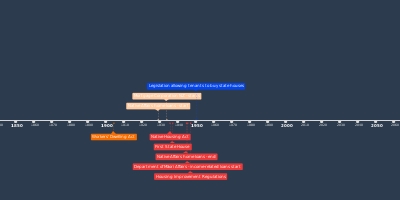17 avr. 2001 - Takawai Gardens already a "slum"
Description:
BERNARD ORSMAN meets apartment tenants who find their almost-new home is full of cracks and cockroaches.Nan Witehira would love nothing better than to move out of her "polystyrene" apartment and back into a plain, solid and practical state house.
The solo mother and three members of her whanau pay $176 a week to live crammed into a two-storey apartment with structural cracks, cockroaches and polystyrene window and door frames.
Chunks of the polystyrene, coated with nothing more than a lick of paint, are coming away, allowing water to seep into the apartment and posing long-term problems with rot and mould.
"The apartment is breaking around us. It is unhygienic. It smells to high heaven from sewage fumes coming back up the toilet, and the polystyrene is weak. It's like living in a packing case," Nan Witehira said.
"Initially when I moved in I thought how modern and excellent the place was. But it didn't take long for cracks to appear up the staircase. Being flats joined together we then got cockroaches ... I would love to move back into a state house."
She and other low-income state tenants live in rows of Coronation St-style terraced houses at Takawai Apartments, dubbed "Takeaway Apartments," at Church St in Otahuhu. Two blocks away is Greenstone Gardens, the notorious three-storey block of state flats. The Herald revealed squalid living conditions there in 1997 and found little had changed two years later.
Some of the problems at Greenstone Gardens were put down to the age of the 1970s Housing New Zealand block. The same cannot be said about Takawai Gardens. The development is barely two years old and already it has been labelled a slum.
The charge comes from Jan Welch, a Labour councillor on the Auckland City Council, who could not believe her eyes when she visited this week.
A state housing tenant most of her life, Jan Welch said she was horrified at the quality of the building materials, peeling polystyrene around the doors and windows, a tiny playground in the middle of the car park, small backyards that got little sun and a lack of fire escapes.
"These so-called new developments are not the slums of tomorrow. They are the slums of today. We don't need to put people into pens like this. It's the pits."
Sue Henry, of the Housing Lobby, agrees: "This ghettoisation of low-income people is totally unacceptable. Housing New Zealand is creating a social time bomb with developments like Takawai Apartments."
Housing New Zealand chief Michael Lenin said the Takawai Apartments development was built under the policy of the previous National Government and was an example of terraced housing from which it "had been able to learn" lessons for future developments and community consultation.
"I undertook my own assessment of that development - I think we can improve on that in future."
He said that although the apartments had been built to specification, he was not happy with some design aspects, including layout of the buildings and open space, car parking and some issues of finishing.
Housing New Zealand had received no complaints from tenants of Takawai Apartments but he was concerned to hear about Ms Witehira's problems.
"We would obviously take that very seriously. People have complaints and whether they're founded or unfounded it's our duty to investigate them."
Housing New Zealand said in response to a list of written questions about Takawai Apartments that it was aware of problems with polystyrene but these were "non-structural." It was unaware of any structural problems with the 32 two-bedroom and 14 three-bedroom units.
"The use of this product [polystyrene] in Housing New Zealand properties is in accordance with various building codes and standards."
In the past five years, Housing New Zealand has bought six similar high-density developments in Auckland and has contracts to buy two more, in Lynfield and on the Three Guys supermarket site in Glen Eden.
Housing Minister Mark Gosche has told Housing New Zealand he favours a pepper-potting approach to new state housing once the legally binding contracts in Lynfield and Glen Eden - signed before Labour came to power - are completed.
"I don't think Housing New Zealand hide the fact they've seen problems with that type of development," said Mr Gosche, "and they don't want to repeat those mistakes.
"Nevertheless, they're there and we've got to maintain them and make sure they are up to scratch."
Tony Conder, the education and information services manager for the Building Research Association, said that even without seeing the crumbling polystyrene it would appear it had not been applied correctly.
He said polystyrene was a good material for the cladding of houses when it was a "proprietary" building product and applied correctly.
That meant at least three plaster coatings, including one with fibreglass mesh reinforcing, and at least one coat of paint to a give total covered thickness of 12mm to 15mm.
The Weekend Herald saw chunks of polystyrene that had come away from the window and door frames with a paint coating of 1mm or less.
There appeared to be no visible problems with the main fibre cement wall cladding.
What really scares Jan Welch is the plan to cram a further 220,000 people into Auckland as the city grows to 580,000 over 50 years.
"The council really needs to look at what they are planning ... because what I have seen at Takawai Apartments and elsewhere is not on."
Source: APARTMENTS CRUMBLING IN HOUSING NZ 'SLUM'.
By BERNARD ORSMAN.
935 words
14 April 2001
New Zealand Herald
Ajouté au bande de temps:
Date:
17 avr. 2001
Maintenaint
~ Il y a 24 ans
